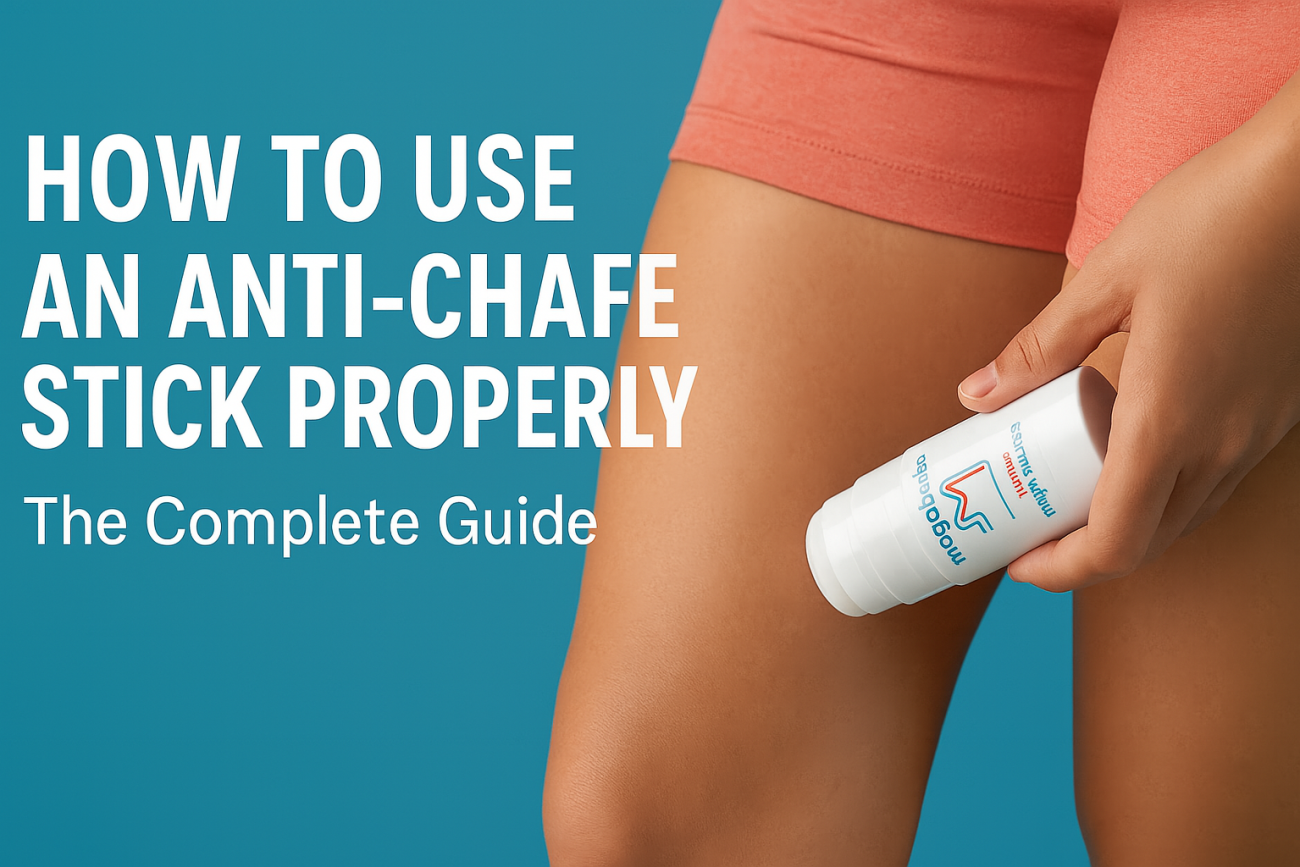Chafing is a common and uncomfortable problem experienced by athletes, runners, hikers, and anyone who’s active. The solution? An anti-chafe stick. While this simple tool can be a game-changer, many don’t realize there are right and wrong ways to use it. In this comprehensive guide, we’ll walk you through how to use an anti-chafe stick properly to keep your skin smooth, healthy, and irritation-free.
What Is an Anti-Chafe Stick?
An anti-chafe stick is a skincare product designed to create a protective barrier on your skin, reducing friction and preventing chafing. These sticks are typically solid, balm-like applicators that glide smoothly onto the skin. They’re especially popular among runners, cyclists, hikers, and anyone engaging in repetitive motion or wearing tight clothing.
Common Ingredients in Anti-Chafe Sticks
- Waxes (such as beeswax or candelilla wax) for barrier protection
- Oils (like coconut or jojoba oil) to moisturize and lubricate the skin
- Silicones (like dimethicone) for a smooth, non-greasy feel
- Botanical extracts for soothing and added skin benefits
Why Should You Use an Anti-Chafe Stick?
Chafing occurs when skin rubs against skin or clothing, leading to irritation, redness, and sometimes even blisters. Using an anti-chafe stick offers several benefits:
- Prevents painful skin irritation and rawness
- Improves comfort during physical activity
- Allows you to enjoy longer workouts and adventures
- Reduces the risk of infection from open chafed areas
Step-by-Step Guide: How to Use an Anti-Chafe Stick Properly
Maximizing the effectiveness of your anti-chafe stick involves more than just a quick swipe. Follow these best practices for optimal results:
1. Choose the Right Anti-Chafe Stick
- Look for products formulated for your skin type (sensitive, dry, etc.).
- Pick a stick that’s suitable for your activity and climate (water-resistant options are best for humid or sweaty conditions).
2. Clean and Dry the Application Area
Always apply the anti-chafe stick to clean, dry skin. Sweat, dirt, and moisture can reduce the product’s effectiveness and may even cause further irritation.
- Shower or wipe down the skin before application.
- Pat the area completely dry with a clean towel.
3. Identify High-Friction Zones
Focus on areas that are most prone to chafing. The most common trouble spots include:
- Inner thighs
- Underarms
- Chest and nipples
- Under bra or sports bra lines
- Waistband area
- Feet and heels (especially for hikers and runners)
4. Apply the Anti-Chafe Stick Generously
- Remove the cap and twist the base to raise the stick slightly.
- Gently glide the stick over the skin in a smooth, even layer. Don’t be shy—liberal coverage works best.
- Pay extra attention to edges and seams where clothing may rub.
- For small areas (e.g., between toes), use your finger or a cotton swab to distribute the balm after direct application.
5. Allow the Product to Set
Wait a minute or two before dressing or beginning your activity. This gives the anti-chafe stick time to form a protective barrier on your skin.
6. Reapply as Needed
For long-lasting protection, reapply the anti-chafe stick every few hours or anytime you feel increased friction or discomfort—especially during longer runs, hikes, or workouts.
Pro Tips for Maximum Chafing Protection
- Carry a travel-sized stick: Toss a mini anti-chafe stick in your gym bag or running belt for on-the-go touch-ups.
- Layer up: In extreme conditions, apply a thin layer of petroleum jelly on top of your anti-chafe stick for added protection.
- Pair with moisture-wicking fabrics: Clothing that pulls sweat away from the skin will help your anti-chafe stick work even better.
- Avoid using on broken skin: If chafing has already occurred, treat any wounds before reapplying anti-chafe products.
- Test for allergies: If you have sensitive skin, always do a patch test before widespread use.
Frequently Asked Questions About Anti-Chafe Sticks
Can I Use an Anti-Chafe Stick on Sensitive Areas?
Yes, most anti-chafe sticks are formulated to be gentle on sensitive skin. However, avoid using on open wounds or already irritated skin. Always check for fragrance-free or hypoallergenic formulas if you have sensitivities.
How Long Does an Application Last?
This depends on the product and your activity level. Most quality anti-chafe sticks protect for 2–6 hours. Always reapply if you notice increased friction or before starting another workout.
Are Anti-Chafe Sticks Safe for Kids?
Generally, yes—especially for children prone to chafing during sports or outdoor play. Opt for child-friendly, fragrance-free versions if possible.
Can I Use an Anti-Chafe Stick With Sunscreen?
Absolutely. Always apply sunscreen first, allow it to absorb, then apply your anti-chafe stick. This ensures both products work effectively.
Other Ways to Prevent Chafing
- Wear well-fitted, moisture-wicking clothing
- Stay hydrated to reduce salt crystals on your skin
- Keep skin clean and dry
- Use powders or specialized anti-chafe creams as needed
Conclusion: Enjoy Chafe-Free Adventures
Knowing how to use an anti-chafe stick properly is the key to preventing skin irritation and discomfort during physical activity. With the right product, correct application, and a few smart habits, you can say goodbye to chafing and hello to smoother, more comfortable workouts. Don’t let friction slow you down—arm yourself with an anti-chafe stick and keep moving with confidence!
